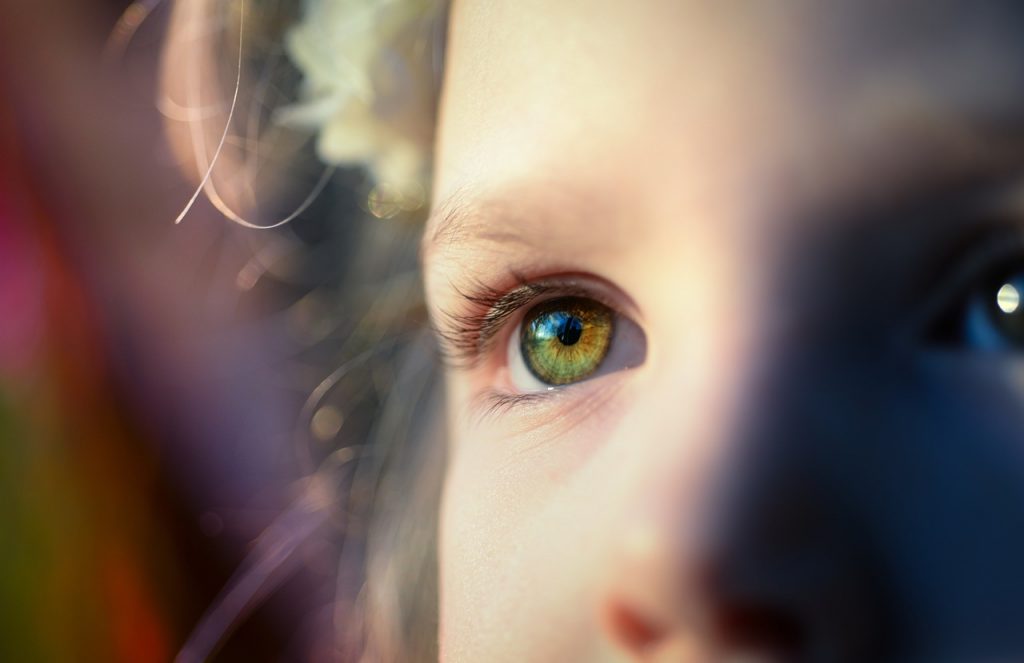
Eye Brain Connection
We all know how much vision is a part of our daily lives and how it impacts everything we do. Which is why as a parent, if you suspect your child is having trouble seeing, you know to take them to an eye doctor to get glasses. But vision goes well beyond just how well we can see; it shares a special connection with our brains that help us categorize, differentiate and understand our surroundings and how we learn from others. In other words, it shapes our perceptions of everything we see.
Visual Perceptual Skills
Visual perceptual skills are a list of skills or processes our brains use to form perceptions. If this system has deficits, than your ability to see what others see may be impacted. The main visual perceptual skills occupational therapists focus on are visual discrimination, visual closure, figure-ground, form constancy, spatial relations, sequential memory, and visual memory.
Visual Discrimination
Perhaps the most basic of them is visual discrimination. It is the ability to differentiate items, forms, letters, people, etc. It allows us to notice differences and similarities. Ex. Without touching them, how do you know the difference between a fork and a spoon? They look similar, are made from the same material, you hold them both in your hand and use them to eat. But just by looking, you know the difference because your eyes see a round oval vs. prongs (linear lines).
Visual Closure
Visual closure is a more difficult skill because it requires higher level problem solving skills. It is the ability to fill in the missing information (or picture) of an incomplete item. It can be simple, for example, if you only see the back half of a cow, you most likely still know it is a cow. However it could be more complex, like being able to visualize what connects to a jigsaw puzzle piece or what letters are missing to spell the word correctly.
Figure-Ground
Figure ground is the ability to locate a hidden item within a visually busy field or background. Think of hidden pictures like the popular Highlights Magazine that started in the late 40s. -Side note, it still exists and is based out of Columbus Ohio now. You use this skill when you are searching your pantry, fridge or junk drawer for a specific item.
Form Constancy
Form constancy is the ability to see and recognize a form no matter how it is presented. It could be turned, bigger, larger, a different font, inside another item, or rotated. If you see a word in an odd font that is hard to read and it is upside down, you still know that the letter a is the letter a, and the letter b is the letter b.
Spatial Relations
Visual spatial relations is the ability to determine how an item is positioned in relation to other items around it. Visual concepts help us label and describe the positioning of an item, is it on top, in, out, under, over, below, left right, to the side, etc.?
Sequential Memory
Sequential memory is the ability to remember/recall a series of things. It gives us the ability to remember individual parts as a whole. For example, can you recall your phone number? Our brains remember 3-4 items or bunches better than 7, so we separate the digits, area code-first 3 digits-last 4 digits. Another example, is when you recall a word, your sequential memory allows you to spell it out and in what order the letters go.
Visual Memory
Visual memory is the ability to store visual details in our short-term memory. Many of us are visual learners. We use pictures in our minds to recall and remember. If you were to see a picture of a room for a couple of seconds, what would you remember about it? The details you are able to recall come from your mind’s visual memory.
What this means for me as an OT
If someone has deficits in any of these skills/areas than their ability to complete some simple daily activities may be impacted. In my life as an OT, when I am working with students on things like handwriting or spelling, I not only consider acuity (do they need glasses), oculomotor skills and how well the eyes work together, and motor planning (we’ll get into this rabbit hole in another post) but also their visual perceptual skills and if these skills are impacting the student’s performance when it comes to activities like reading and writing.